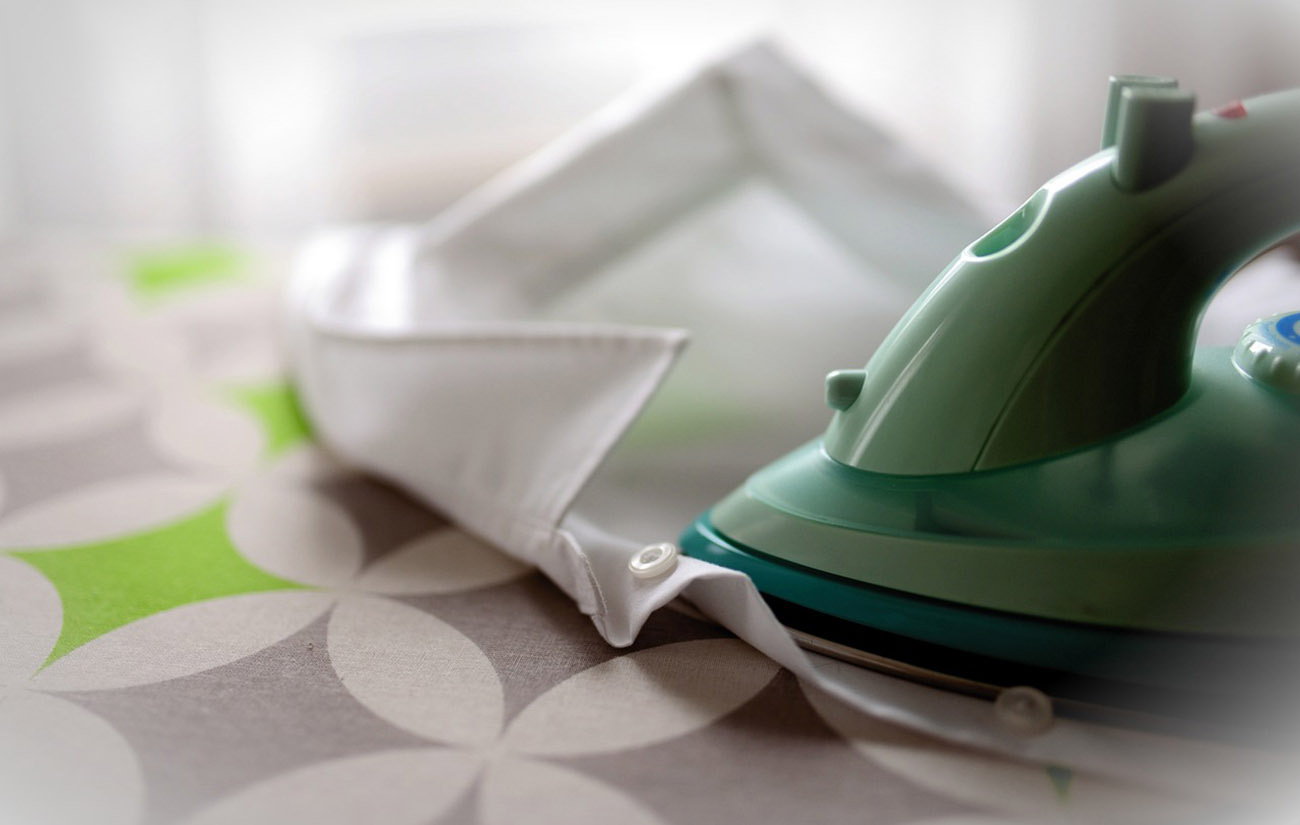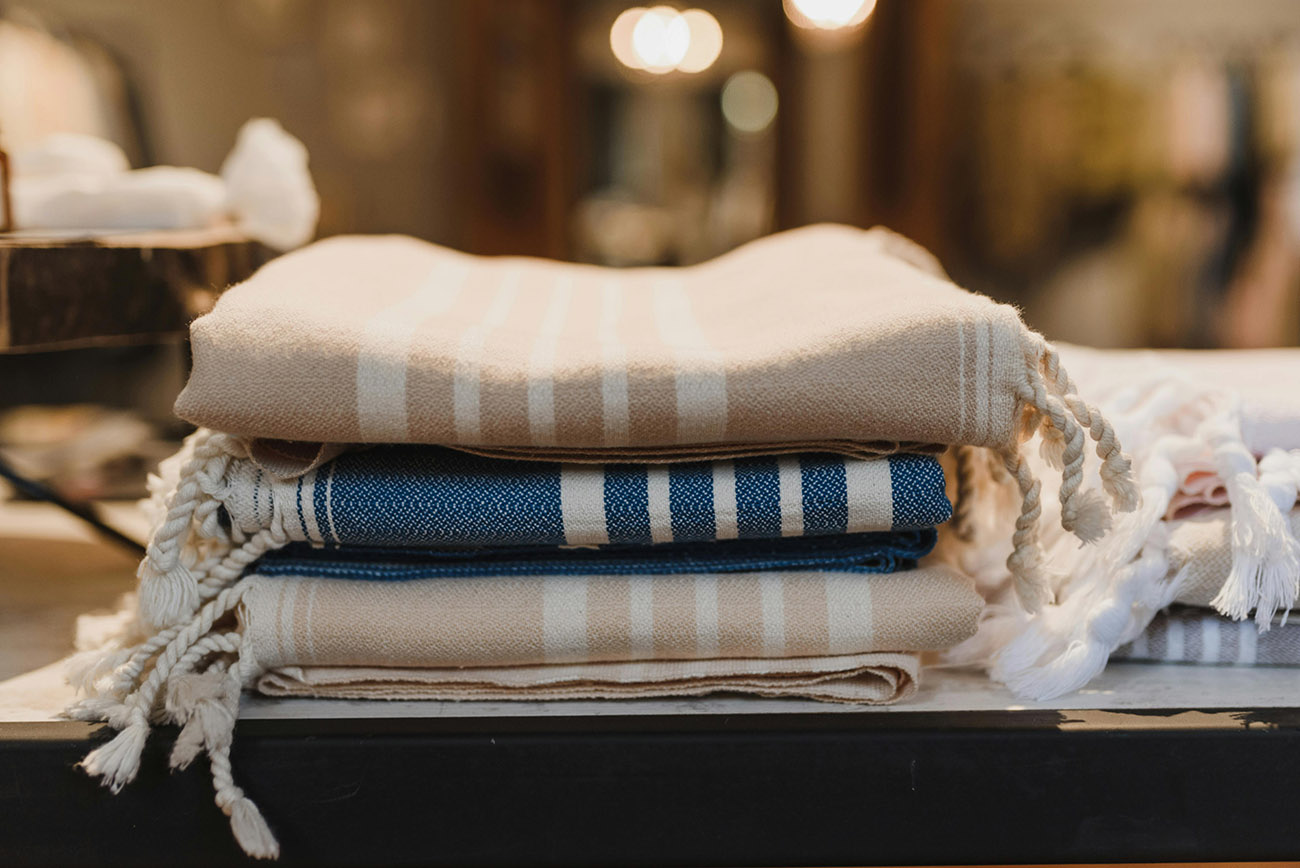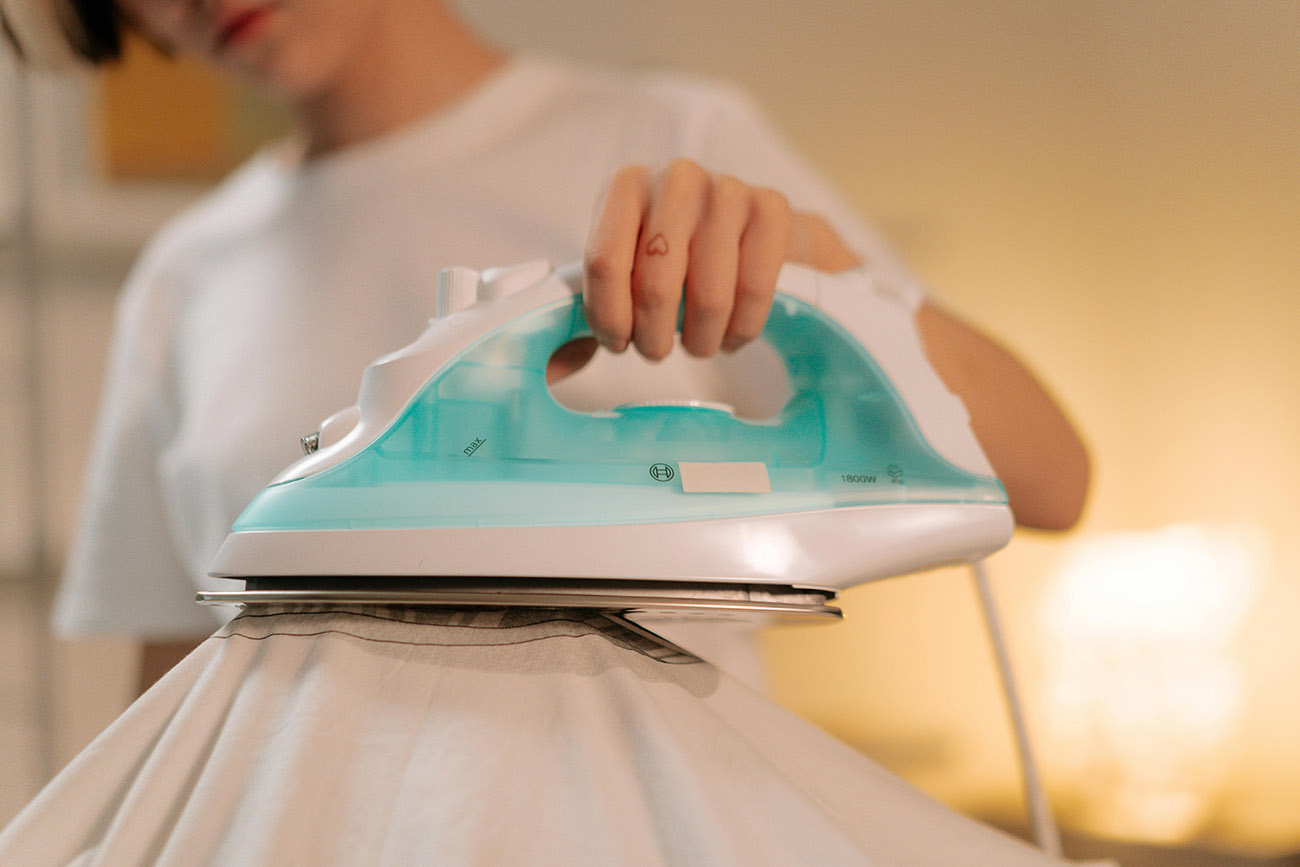Ironing certainly doesn't top the list of favorite ways to spend free time. For most of us, it's more of a necessary evil than a pleasure, and we try to limit it to the clothes that absolutely need it. Just like any other task, there are tricks, techniques, and tools that can make ironing less of a chore and more effective. Plus, ironing helps clothes keep their shape and extends their lifespan.
In this article, you'll discover several golden rules that will teach you the art of ironing, making it easier for you to achieve crisp, wrinkle-free, and fresh-smelling clothes.

Preparation for Ironing
Before ironing, always make sure that the specific piece of clothing or fabric can be ironed. This information is indicated by the symbol on the clothing label. If you find an iron symbol, it means the clothing can be ironed. However, if the iron symbol is crossed out, the fabric must not be ironed. Inside the iron symbol, you usually find one, two, or three dots, which indicate the temperature setting for the iron.
Before you start ironing, sort your clothes out by material. Begin with ironing fabrics that require the lowest temperature setting. Gradually move on to materials that need a higher temperature. This way, you'll save time waiting for the iron to heat up or cool down and avoid wasting electricity unnecessarily.
Get your ducks in a row for ironing by preparing the surface you'll be ironing on. The best tool for this job is an ironing board. If you don't have one at home, iron on a fireproof surface, such as a table covered with a folded blanket and an older cotton cover or canvas sheet.
When using a steam iron, which is a staple in almost every household these days, make sure you're equipped with distilled water – it's the best choice for filling the iron's reservoir. Avoid using tap water to prevent limescale build-up in the iron. If you don't have distilled water on hand, boil tap water in a kettle, let it cool down, and then pour it into the iron. Always empty the water after ironing and let the iron cool down.
Ensure your iron is as clean as a whistle to avoid laboriously removing coloured smudges from your favorite shirt or tee after ironing them with a burn mark from a previous session.
Double-check that there are no stains on the clothes, which could be ironed into the fabric, making them much harder, or even impossible, to remove later.

Tricks for Perfect Ironing
Here are some tried-and-true tricks to get your clothes ironed like a pro:
- For t-shirts with prints or sequins, iron at a low temperature, no higher than 110 °C, with the print or sequins facing inwards. Prints and patches are less heat-resistant than fabric and can stick to the ironing board or iron, causing damage.
- Delicate and dark fabrics should be ironed inside out. Dark materials tend to get a shiny appearance when in direct contact with the iron.
- Turn pockets inside out to avoid ironing their outlines.
- Slightly dampen your laundry. The rule of thumb is, the drier the fabric, the harder it is to achieve a wrinkle-free finish, especially with bed linens, towels, and shirts. Start ironing clothes while they're still mildly damp, or moisten them with a spray bottle or by placing a damp cloth on top.
- The best way to iron clothes is by using a steam iron. It helps remove creases and gives your clothes a nice look while helping them hold their shape.
- All embroidered parts should be ironed inside out and placed on a towel to prevent pressing and damaging the embroidery.
- Iron all garments from top to bottom and vice versa to follow the natural direction of fabric fibers and prevent pulling and distortion of the material.
- Be cautious when ironing zippers. Never run the iron over them; instead, iron around them, as a metal zipper could damage the ironing surface, and a plastic zipper might melt upon contact with high temperatures.
- Start ironing shirts or blouses from the sleeves. Proceed with the collar, shoulders, side parts, and finally, the back. Be cautious when ironing buttons.
- For skirts, put them on the ironing board and iron from the hem towards the waist. If the skirt has a lining, turn it inside out and iron separately
- Ironing pleated skirts can be a bit trickier. Stretch the pleated skirt on the ironing board, secure each pleat with a pin, clip, or clothespin, and iron from the top down. Hold the iron vertically and carefully go over each pleat. If the skirt needs moisture, place a clean damp cloth on it.
- Prepare hangers in advance and immediately hang freshly ironed clothes, letting them cool on the hanger. Place them in the wardrobe with enough space between them to prevent unwanted wrinkles from forming on the fabrics.
- When hanging freshly laundered clothes on the drying rack, always attach the clothespins to the edges. Clothespins may leave marks on the fabric, but they are much easier to remove with ironing from the edges than from visible areas.
If you don't have the option to iron your clothes but still need to freshen them up and restore their shape, hang them on the hanger in your bathroom. The steam released in the room will help smooth out wrinkles and straighten the clothes.

Employ the Right Tactics When Ironing Different Fabrics
Prevent clothing damage and burning cash with unnecessary energy consumption by adjusting the iron to the right temperature.
Silk should always be ironed at a low temperature (148°C), turned inside out. To protect the material and make it "as smooth as silk," it is advisable to use a handkerchief or cloth.
Iron lace and nylon at the lowest temperature (up to 110 °C) and without using steam.
Cashmere and velvet should not be ironed at all; however, you can steam them.
Polyester is ironed at a medium temperature (148°C).
Cotton can be ironed at a high temperature (200°C).
Corduroy, tweed, and flannel should be ironed at a medium temperature (140–170 °C) from the reverse side or through a damp cloth.
Wool does not tolerate high temperatures, so iron it at a low temperature (100–120°C) turned inside out. Hand-knit items should not be ironed at all; alternatively, hang them in a steam-filled bathroom. Steam will help smooth out wrinkles.
Iron viscose at a low temperature (120°C).
Linen (flax) should be ironed slightly dampened with a spray. Use steam at the highest temperature (180–200°C).
Avoid ironing terrycloth towels entirely, as it diminishes their absorbency.
Chiffon is very delicate when it comes to ironing. You must iron it at a very low temperature (60–80 °C) and without using steam. Any water droplet that falls on this material can leave a stain. After ironing chiffon, let it cool for about 10 minutes, as this allows the fabric to acquire the desired shape.

Jazz Up Your Ironing Routine
Transform ironing from a dull duty into a delightful experience.
Turn ironing into a blockbuster event by placing your board in front of the TV. Dive into your favorite series or a cinematic delight while dodging the news to prevent a wardrobe inferno. Amp up the entertainment with your go-to tunes, an exciting audiobook, or a foreign language crash course. Ironing just got a whole lot more fabulous!
Wash your clothes with a quality detergent to ensure a satisfying sense of cleanliness, bringing you comfort and joy when touching the fabric.
Sprinkle some laundry perfume into your wash for a scent that lasts, turning your clothes into a fragrant delight—whether you're ironing or they're chilling in the closet.
